What's Hot Archive 2017
What's Hot in January
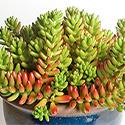
How can frost damage to succulents be prevented?
You may want to keep your succulents in pots so you can move them indoors or to a sheltered location when freezing temperatures are in the forecast. Unlike other plants, succulents should be kept on the dry side during cold weather. When plant cells are filled with water, they are more likely to burst if the water freezes. Plants can also be covered with sheets, drop cloths, blankets, or plastic. Use stakes or cages to keep material from touching the plants.
For more information see: How to Protect Plants from Frost
What's Hot in February
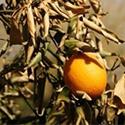
What are the signs that plants have been damaged by a freeze?
https://ucanr.edu/sb3/admin/pages.cfmLeaves and new growth are usually affected first. Initially they will appear wilted. Then the wilted growth will turn brown, or will turn black and become crispy. This means these parts of the plant have died. The temptation is to remove this dead growth immediately, but you should not prune frost-damaged plants until the full extent of the damage is apparent in the spring.
For more information see Recognizing and Caring for Frost Damaged Plants.
What's Hot in March
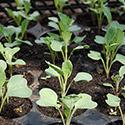
What vegetable seedlings can be set out in March?
Seedlings of cool season vegetables can be planted now. This includes broccoli, cauliflower, cabbage, Swiss chard, beets, carrots, lettuce, peas, radishes, spinach and turnips. Potato tubers can also be planted in mid-March.
For more information see the Master Gardener Planting Guides:
Chico Valley Area Planting Guide
Foothill Planting Guide
What's Hot in April
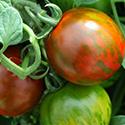
What is the difference between determinate and indeterminate tomatoes?
The terms determinate and indeterminate refer to the growth habit of a tomato plant. Determinate tomatoes are bush-like, grow to a certain size, produce a single crop and then decline. Indeterminate tomatoes have a vining growth habit. They grow and produce fruit continuously until killed by frost or disease.
For more information see Tomatoes.
What's Hot in May
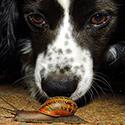
Is there snail bait that is safe around pets?
The University of California recommends that home gardeners practice Integrated Pest Management (IPM) and use chemical controls as a last resort. That being said, iron phosphate baits (trade names include Sluggo and Escar-Go) are safe to use around children, pets, domestic animals, birds, fish and other wildlife.
For more information see the Pest Note Snails and Slugs
What's Hot in June
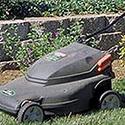
What are the benefits of grasscycling?
Grasscycling involves leaving grass clippings on the lawn after mowing. The clippings act as mulch, which conserves water and slowly releases nutrients back into the soil as the clippings decompose.
For more information see Grasscycling—what to do with the grass clippings
What's Hot in July
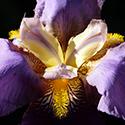
When is the best time to divide bearded irises?
Irises should be divided every three to five years in July or August when the plants are dormant. Dividing the plants prevents overcrowding which can result in weakened, poorly flowering plants.
For more information see the Real Dirt article It’s Time to Divide Bearded Iris.
What's Hot in August
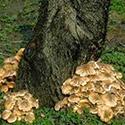
Is there a fungicide that will control oak root fungus?
The short answer to this question is “no.” Oak root rot is caused by the fungus, Armillaria. The best approaches to controlling this deadly plant disease are 1) avoiding over-watering, and 2) planting species that are resistant to it (these include madrone, tree anemone, western redbud, some maples, and many species of pine).
For more information see the Real Dirt article Oak Root Fungus−Armillaria Mellea.
What's Hot in September
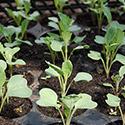
It has been a really hot summer, but winter vegetables will need to be started soon. When is the best time to transplant nursery-grown winter vegetables into the garden?
September is the best time to get winter vegetables like broccoli, cabbage and lettuce transplanted into your garden. Use shade covers to protect young plants from sun damage if high temperatures are forecast.
For information on best times to plant seeds and transplant vegetable starts, see our Vegetable Planting Guides.
Chico Valley Area (pdf)
Foothills (pdf)
What's Hot in October
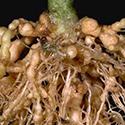
What are those strange looking bumps on the roots of my tomato plants?
Root knot nematodes are small (0.01-1.0 inch) galls that form on tomato roots. These galls can interfere with the flow of water and nutrients to the plant which can make them less vigorous and yellowed when compared to healthy plants. Control by using nematode resistant tomato varieties and rotating with non-host crops like black eyed peas which are resistant to some root knot species.
See the UC IPM guidelines on Root Knot Nematodes for more information.
What's Hot in November
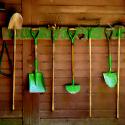
Name 5 things that need to be done before cold weather sets in.
(and it will!)
- Apply dormant fungicide sprays to protect buds from leaf curl on peaches and nectarines and shothole fungus on peach, nectarine and apricot trees. Apply from mid-November thru mid-December. Reapply in early February but before bud swell.
- Identify plants, faucets and exposed water pipes that may be damaged if not properly protected.
- Begin pruning trees and shrubs to remove dead, diseased and broken branches to promote vigor, open the canopy to sunlight and improve air circulation.
- Plant onions and garlic now for Spring harvest.
- Get your garden tools ready for spring by doing some maintenance now.
- Drain the fuel tanks on power equipment or add fuel stabilizer.
- Change engine oils, spark plugs and replace worn or damaged blades.
- Sharpen hoes, shovels, shears etc. before putting them away for the winter so they'll be ready to go in the spring.
- Have frost protection supplies such as sheets, burlap or heavy-weight polypropylene frost blankets ready now because they'll be hard to find when we get the frost warnings.
Ok—that was 6 things. Start your own list and add it it.
What's Hot in December
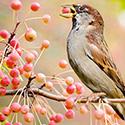
Is it okay to be a lazy gardener?
Have you finished your Fall garden clean-up? Not quite? Great! Pat yourself on the back and take the Pledge to be a Lazy Gardener! The Cornell Lab or Ornithology, The Nature Conservancy, and other environmental organizations encourage home gardeners to leave their messy winter gardens alone, in order to provide habitat for birds, bees, and other critters.
Find out more, and take the pledge.
